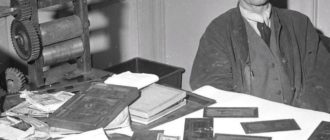
Mural (from the Spanish muro “wall”) is a kind of monumental painting on large buildings and other architectural structures. A mural is usually a colorful expressive image applied to the vertical surface of the blank walls of residential buildings, commercial buildings or fences. Much less often, the object of creativity for artists is the interior of spacious rooms (lobby, hall or hall of a high-rise building).
Mural is a popular type of street art in big cities these days. The authorities of large cities willingly provide artists with dimensional vertical areas for painting. Beautiful paintings look spectacular against the background of monotonous buildings and attract tourists from all over the world.

Classification and features of mural
Mural is a unique type of monumental painting, in which features of both traditional fresco and modern street art are present. Dimensional works of art created by skilled artists can vary in the following parameters:
- Subject.
- Technique of performance.
- The type of paints.
- Genre.
- Style.
Among the many different mural themes, the most popular in most countries of the world are:
- Social. He touches upon the acute problems of modern society, arouses sympathy in people and a desire to help the heroes of the work.
- Patriotic. It is part of the official propaganda of the state, used by the authorities to exalt the country and outstanding historical figures.
- Philosophical. Serves as a means of expressing the artist’s individual creative ideas, evokes strong emotions in the viewer.
- Aesthetic. Ideal for improving the visual perception of urban space, has a neutral emotional coloring.
- Religious. Glorifies the greatness of God and makes a person think about eternal spiritual values.
Murals, like ordinary urban graffiti, are created using several different painting techniques.

The main tools for applying images to the wall are:
- aerosol cans with paints;
- rollers;
- brushes;
pre-prepared stencils. Murals differ from other forms of street art not only in their large dimensions, but also in three other important features:
- First, the creation of a large-scale work of art requires a significant investment of effort and artistic materials. This leads to the need to search for and attract wealthy patrons to the implementation of the project.
- Second, the artist must obtain permission from the city government and or the building owner before starting work. Ignoring this rule is fraught with unpleasant consequences, including a monetary fine.
- Thirdly, the authors of murals most often fulfill orders from curators or sponsors and receive a solid monetary reward for their work. The initiative to create a monumental work of art comes from above.

Mural History
The history of the mural as an independent type of monumental art is about 100 years old. Although the artistic painting of vertical walls with grandiose scenes on the theme of hunting and sacrifices, people were fond of even in the prehistoric era. Numerous examples of such creativity have survived to this day in caves around the world.
Mexico is rightfully considered the birthplace of the modern mural. It was in this Latin American country that a new type of monumental art emerged during the revolutionary events of the 1920s. Local artists literally took the call of the avant-garde artists to go outside the workshop to the streets, bring revolutionary art to the masses and ruthlessly break classical traditions.

The outstanding Mexican painter José Clemente Orozco was one of the first to join the painting of murals. In 1923, he created a huge artwork on the wall of the National Preparatory School in Mexico City.
The new approach to monumental art was well received by the Mexican authorities. The Minister of Education even commissioned a group of young revolutionary artists to paint a series of wall paintings on public buildings.
Many well-known masters of painting later joined in this task:
- Diego Rivera
- David Alfaro Siqueiros;
- Rufino Tamayo;
- Miguel Covarrubias;
- Jean Charlot.
Many of the artists listed above were communist by conviction. They brought revolutionary creative ideas to the Soviet Union in the 1930s, where the authorities subsequently made extensive use of large-scale wall paintings to promote socialist ideas. In Western Europe and the United States, mural art began to enjoy popularity much later in the mid-1980s. In those days, graffiti was a real disaster in big cities.
Street artists mercilessly painted the walls of houses, fences and even subway cars with paints from aerosol cans. Local authorities have been unsuccessfully fighting against artistic arbitrariness for decades. One of the ways to solve the acute problem was the mural popularization campaign, which was gradually adopted in most large metropolitan areas. Its implementation allowed not only to significantly reduce the amount of graffiti, but also provided ample opportunities for self-realization of young artists.
Today murals occupy a worthy place in world culture. They play an important role in the formation of a comfortable urban space for people to live, attract tourists and serve as an excellent means for the self-expression of talented painters.
Mural photo















